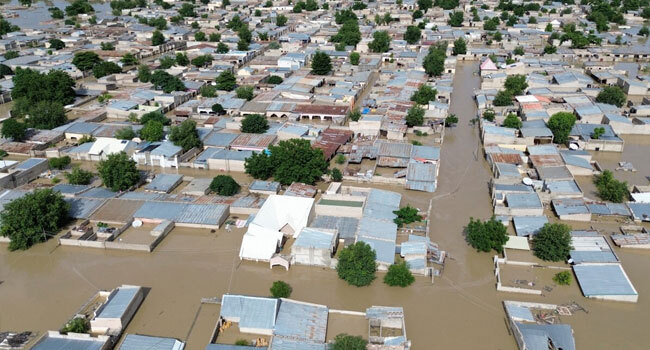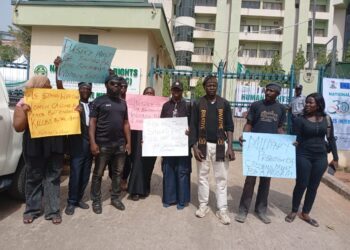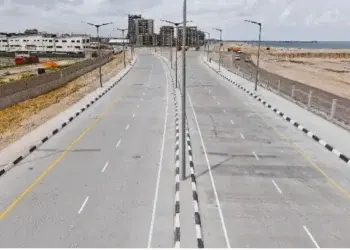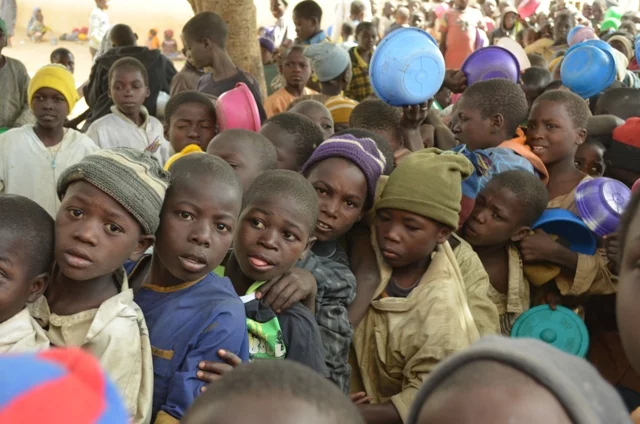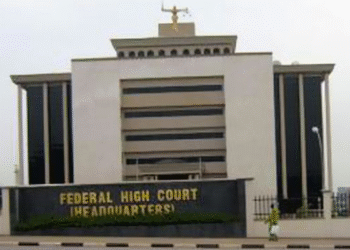The Federal Government has issued a warning regarding anticipated heavy rainfall and flooding across 30 states and the Federal Capital Territory (FCT), Abuja.
The states identified as high-risk for flooding include: Abia, Adamawa, Akwa Ibom, Anambra, Bauchi, Bayelsa, Benue, Borno, Cross River, Delta, Ebonyi, Edo, Gombe, Imo, Jigawa, Kebbi, Kogi, Kwara, Lagos, Nasarawa, Niger, Ogun, Ondo, Osun, Oyo, Rivers, Sokoto, Taraba, Yobe, Zamfara, along with the Federal Capital Territory.
On Thursday, the Minister of Water Resources and Sanitation, Joseph Utsev, indicated that regions within the South-South geopolitical zone are likely to experience coastal and riverine flooding due to rising sea levels.
Recent flooding incidents in Maiduguri, particularly following a leak at the Alau Dam in 2024, exemplify the severity of the situation.
Among the states at heightened risk are Bayelsa, Cross River, Delta, and Rivers, in addition to Akwa Ibom and Edo, which also fall under the high-flood risk category.
Utsev made these comments during the public unveiling of the 2025 Annual Flood Outlook by the Nigeria Hydrological Services Agency (NIHSA) in Abuja. The 2025 Annual Flood Outlook (AFO) is divided into three sections aimed at addressing the urgent challenges posed by flood disasters while providing critical information for mitigation efforts, particularly in the most vulnerable populations.
The minister emphasized that flooding remains one of Nigeria’s most devastating natural disasters, a situation exacerbated by climate change, which intensifies both the frequency and severity of such events.
He noted that this year, 1,249 communities across 176 Local Government Areas (LGAs) in the 30 states and the FCT are situated within high-risk flood zones, while an additional 2,187 communities in 293 LGAs are at moderate risk of flooding. Key areas of concern include Abia, Benue, Lagos, Bayelsa, Rivers, and Jigawa, among others.
To enhance early warning and response strategies, this year’s AFO has introduced a community-based flood forecasting methodology. This approach allows for forecasts that are tailored to specific communities, thereby improving actionable communication and preparedness at the local level.
In his remarks, the Permanent Secretary of the Ministry of Water Resources and Sanitation, Richard Pheelangwah, urged stakeholders to prioritize timely responses. “This outlook is not merely numerical; it is fundamentally about safeguarding lives and livelihoods,” he stated.
Umar Mohammed, Director General of NIHSA, highlighted that this year’s flood forecast goes beyond merely identifying LGAs and now pinpoints specific communities at risk. “Our focus has expanded to evaluate the impacts on various sectors, including health, education, agriculture, and infrastructure, providing more comprehensive tools for policymakers and disaster risk managers,” he remarked.


